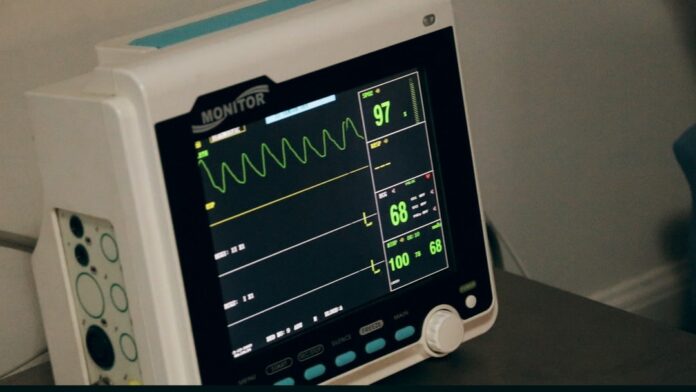Did you know that there are more than 7,000 active hospitals in the United States?
Patient monitors are crucial to both patients and caretakers. The secret to providing high-quality medical treatment is to find one that is reasonably priced. It must also match your hospital’s demands.
Before purchasing a patient monitor, you should read this guide to learn everything there is to know about purchasing this type of medical technology.
1. Your Hospital Needs
The first step in purchasing a patient monitor is determining what requirements you want it to satisfy. When selecting a patient monitor, there are several factors to take into account. This includes blood pressure readings, ECG waveforms, pulse rates, and breathing rates, to name a few.
Decide which parameter(s) your device will track and make your purchase accordingly. If all types are crucial, choose the multi-parameter option without a doubt. But if there are particular parameters you want to keep an eye on, look for a device that does so, such as a vital signs monitor or cardiac monitor.
2. Printing and Reporting Capabilities
You might want to choose a patient monitor that can store, transmit, or print patient data for later inspection or comparison when making your purchase. This indicates that in order to carry out this task, some types of monitors need to have a wired or wireless connection.
Additionally, make sure that the images are clear and legible if printing is required.
A lack of attention to image quality assurance, especially with the transition from hard copy (film) to soft copy (computer) display technologies, could potentially result in difficulties reading photos or even misdiagnosis. Image quality assurance has traditionally been a top priority for medical imaging departments.
Make sure the patient monitor you choose has the ability to print high-quality photos that contain patient reports in order to avoid any issues of this nature. Click for patient monitors available for sale!
3. Ease of Use
Although patient monitors are made to be reasonably simple to use, some models could be easier to use than others.
Ease of use essentially means that the operator shouldn’t have any trouble using the menu or the monitor.
Healthcare workers may navigate menus and find the needed information with the aid of a patient monitor with an easy touch screen.
Compatibility means that your chosen monitor must function effectively with existing equipment. Additionally, is a good idea to choose one that supports internet communication.
Patient monitors with USB ports, on the other hand, ought to be your first choice if the majority of the hospital equipment you use enables wired connections for data transfer.
Use These Tips Before Purchasing Patient Monitors
Patient monitors are crucial additions to any institution because they are quite useful for assisting medical staff in tracking patients’ health states. Now that you’re aware of these tips, you can make a more informed purchase when choosing patient monitors.
Did you learn something new? Check out the rest of our posts about all things health for more information.
Read Also
- How to Drive Growth Through Customer Centricity in HealthcareThe world of healthcare is changing in big ways. Consumers are now stepping up and taking charge of their health journeys. This change is happening now for important reasons. The U.S. health and wellness market is huge, projected to be over $6 trillion in 2025. This growth is fueled by rising out-of-pocket costs and more… Read more: How to Drive Growth Through Customer Centricity in Healthcare
- Maximizing Digital Reach for Podiatry Clinics in Local HealthcareMaximizing Digital Reach for Podiatry Clinics in Local Healthcare As the healthcare industry evolves, mobile marketing becomes indispensable for practitioners. Podiatry clinics, focusing on foot and ankle care, must adapt to digital strategies to engage patients effectively. Implementing tailored SEO practices is crucial for these clinics to thrive in an increasingly competitive market. Digital marketing… Read more: Maximizing Digital Reach for Podiatry Clinics in Local Healthcare
- Leveraging Virtual Medical Assistants to Maximize Operational Efficiency in HealthcareIn the increasingly complex and fast-paced world of healthcare, operational efficiency is critical. Doctors and healthcare administrators are faced with numerous challenges, from managing patient scheduling and medical billing to adhering to stringent regulatory compliance and insurance claims processing. These tasks, while essential, often divert time and resources away from the core mission of providing… Read more: Leveraging Virtual Medical Assistants to Maximize Operational Efficiency in Healthcare
- Optimizing CT Protocols: The Hidden Key to Efficiency and Cost Savings in RadiologyIntroduction: Why CT Protocol Optimization Matters Computed Tomography (CT) is a cornerstone of modern diagnostic imaging, providing critical information across nearly every medical specialty. However, maximizing the value of CT — both clinically and financially — requires more than just advanced hardware. The real secret lies in the optimization of CT protocols. When CT protocols… Read more: Optimizing CT Protocols: The Hidden Key to Efficiency and Cost Savings in Radiology
- Hospital Discharge Accuracy Improves With Daily Advisor InvolvementThe hospital discharge process has a big effect on patient recovery, hospital efficiency, and finances. It requires careful planning and clear communication between team members to make sure patients get the right care when they leave the hospital. Having physician advisors involved at this stage can improve the discharge process by spotting problems that need… Read more: Hospital Discharge Accuracy Improves With Daily Advisor Involvement






